SpaceX: Facts about Elon Musk's private spaceflight company
SpaceX is the maker of Starship and a private space company known for its International Space Station missions.
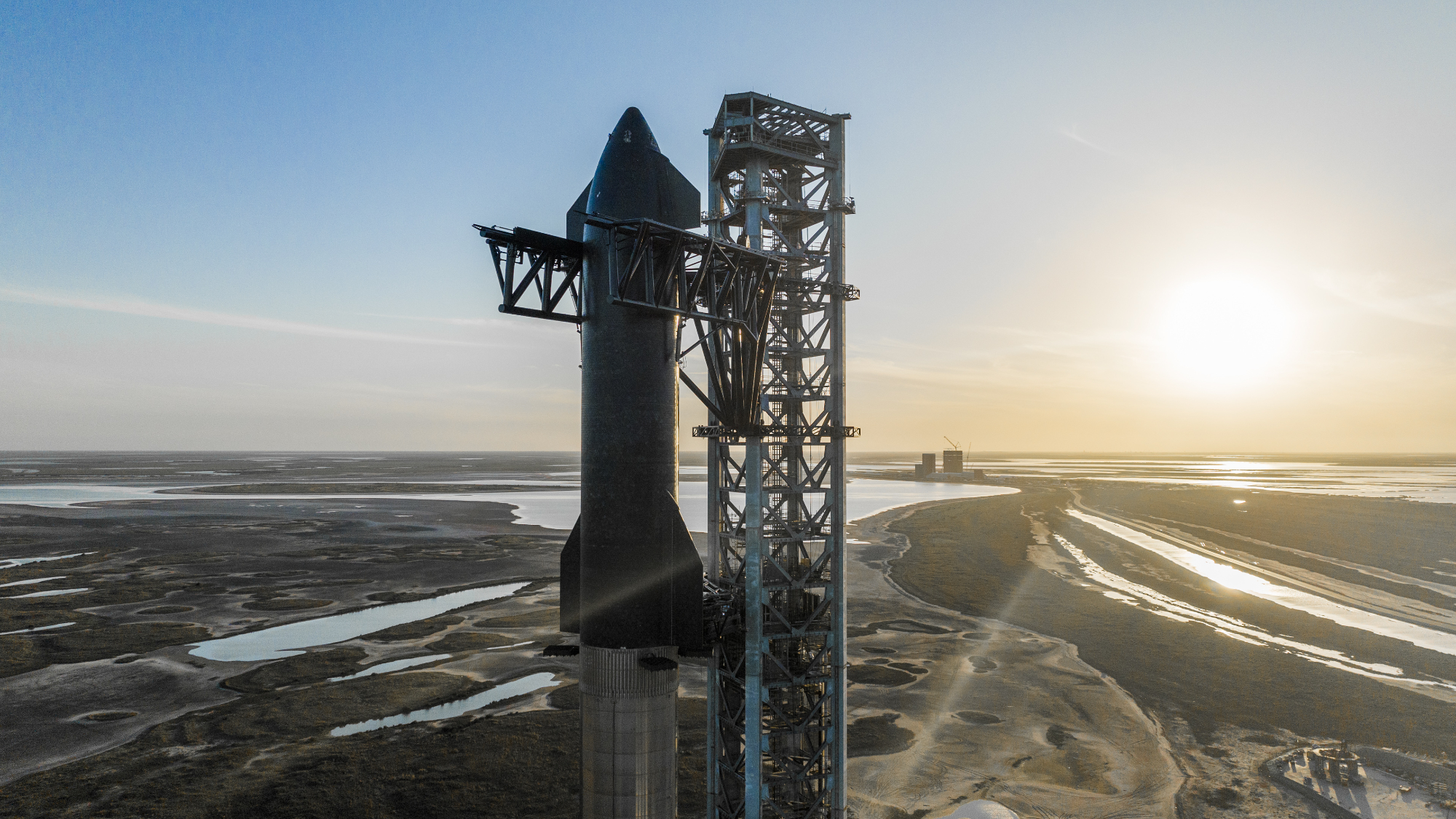
SpaceX is a private spaceflight company that sends satellites and people to space, including NASA crews to the International Space Station (ISS). Founder Elon Musk is also creating and testing a Starship system for lunar landings and, he hopes, future crewed Mars missions.
The company sent its first two astronauts to the ISS on May 30, 2020, aboard the SpaceX Crew Dragon and has sent several more crews aloft on behalf of NASA and other entities.
As of mid-2022, it is the only commercial spaceflight company capable of sending astronauts to space, although it may soon face competition from Boeing's CST-100 Starliner.
Related: 8 ways that SpaceX has transformed spaceflight
SpaceX founder Elon Musk
SpaceX was founded by Musk, a South African-born businessman and entrepreneur. At age 30, Musk made his initial fortune by selling his two successful companies: Zip2, which he sold for $307 million in 1999, and PayPal, which eBay purchased for $1.5 billion in 2002, The New York Times reported. Musk decided his next major venture would be a privately funded space company.
Initially, Musk had the idea of sending a greenhouse, dubbed the Mars Oasis, to the Red Planet. His goal was to drum up public interest in exploration while also providing a science base on Mars. But the cost ended up being too high, and instead, Musk started a spaceflight company called Space Exploration Technologies Corp., or SpaceX, now based in the Los Angeles suburb of Hawthorne, California.
He spent a third of his reported fortune, $100 million, to get SpaceX going. There was skepticism that he would be successful, which persisted into SpaceX's first years.
After spending 18 months toiling privately on a spacecraft, SpaceX unveiled the craft in 2006 under the name Dragon. Musk reportedly named the spacecraft after "Puff, the Magic Dragon," a 1960s song from the folk group Peter, Paul and Mary. He said he chose the name because critics believed his spaceflight aims were impossible.
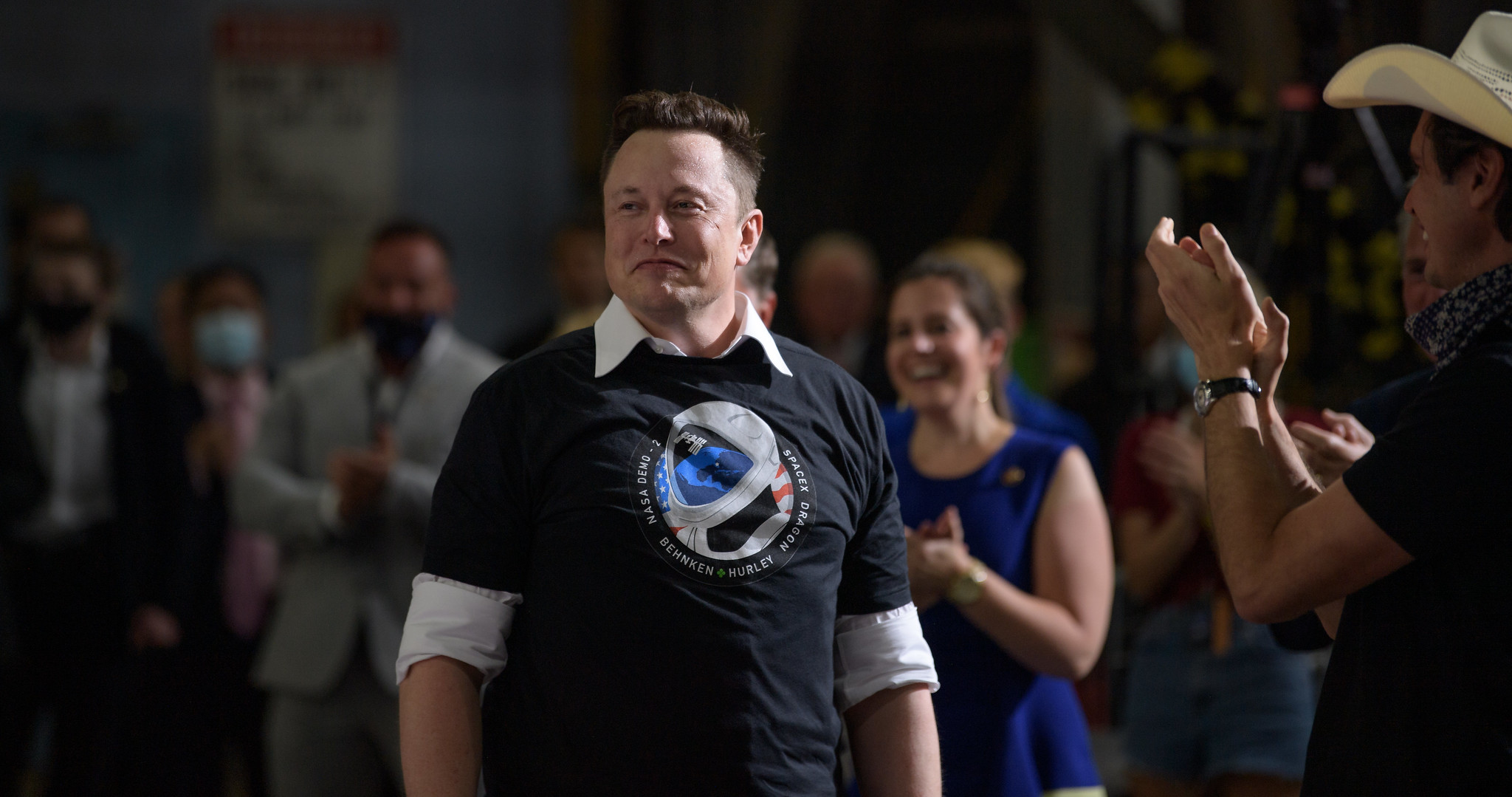
SpaceX's first rocket: Falcon 1
Musk was already an experienced businessman when he started SpaceX, and he strongly believed that more frequent and more reliable launches would bring down the cost of exploration. So, he sought out a stable customer that could fund the early development of a rocket: NASA. (Later, he wooed launch clients from various sectors to diversify his customer base.) As such, his goal for SpaceX was to develop the first privately built, liquid-fueled booster to make it into orbit, which he called the Falcon 1.
The company experienced a steep learning curve on the road to orbit. It took four tries to get Falcon 1 flying successfully, with previous attempts derailed by problems such as fuel leaks and a rocket-stage collision. But eventually, Falcon 1 made two successful flights: on Sept. 28, 2008, and July 14, 2009. The 2009 launch also placed the Malaysian RazakSat satellite into orbit.
Related: See The Evolution of SpaceX's Rockets in Pictures
In 2006, SpaceX received $278 million from NASA under the agency's Commercial Orbital Transportation Services (COTS) demonstration program, which was created to spur the development of systems that could transport cargo commercially to the ISS. The addition of a few more milestones eventually boosted the total contract value to up to $396 million. SpaceX was selected for the program along with Rocketplane Kistler (RpK), but RpK's contract was terminated with only partial payment after the company failed to meet the required milestones.
Multiple companies participated in the COTS program in its early stages, in funded or unfunded contracts. In 2008, NASA awarded two contracts for commercial-resupply services. SpaceX received a contract for 12 flights (worth $1.6 billion), and Orbital Sciences Corp. (now Orbital ATK) received a contract for eight flights (worth $1.9 billion).

Better rockets: Falcon 9, Falcon Heavy
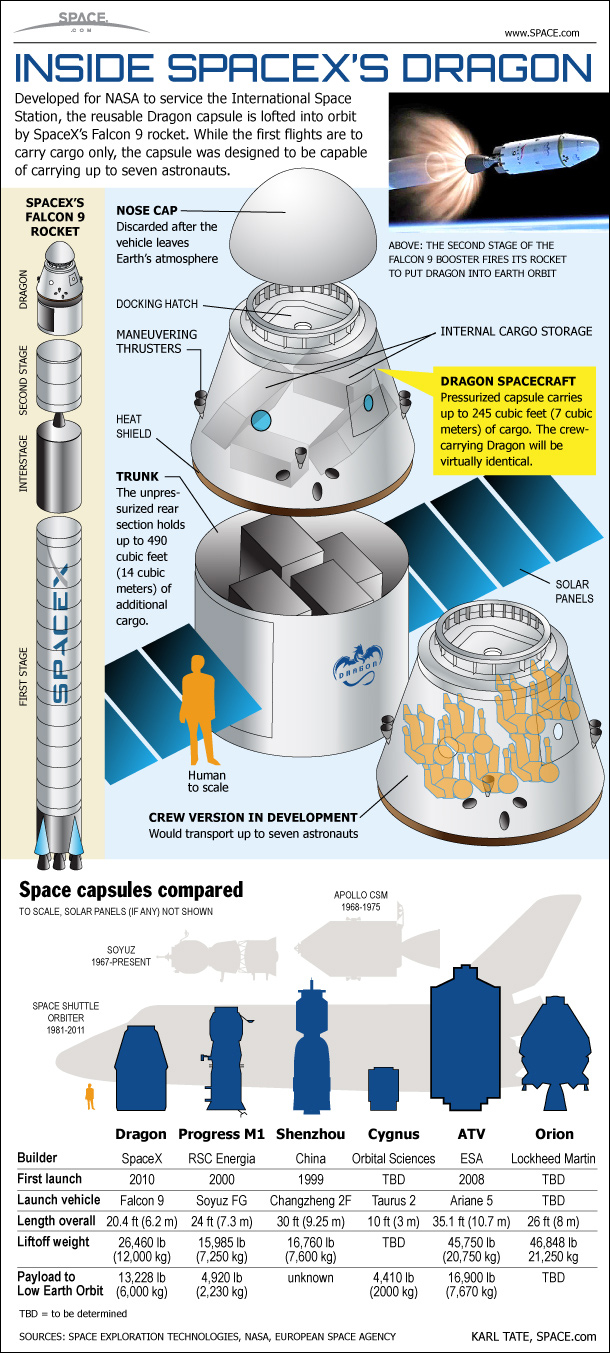
The workhorse rocket of the SpaceX fleet is the Falcon 9, and one of its features is reusability. Falcon 9 hefts much more cargo than Falcon 1: 28,991 lbs. (13,150 kilograms) to low Earth orbit, compared to Falcon 1's capacity of 1,480 lbs. (670 kg).
The first Falcon 9 booster landing took place on Dec. 21, 2015, and SpaceX now strives to make its boosters retrievable as a matter of course. They generally land on a robotic drone ship nearby the launch pad. Many of the Falcon 9 boosters have been used multiple times, to reduce launching costs.
A more powerful rocket, known as Falcon Heavy, made its debut on Feb. 6, 2018, meeting almost all of its major milestones. Falcon Heavy successfully flew to orbit, carrying a Tesla Roadster (an electric car made by Tesla, another company owned by Musk) and a spacesuited mannequin nicknamed Starman. SpaceX ran a live stream of the launch and the Roadster's first few hours in space, which attracted attention from all over the world.
The two rocket boosters landed successfully near Kennedy Space Center, as expected, but the core stage hit the ocean at 300 mph (480 km/h), which was too fast, and it didn't survive the impact. Falcon Heavy then performed an engine burn in space that is expected to bring the Roadster at least as far as Mars' orbit.
April 2019 saw a setback for SpaceX when a test of the crewed Dragon spacecraft, intended to bring NASA astronauts to space, experienced a malfunction while on the ground. This created a smoke plume visible for miles around Cape Canaveral, Florida. The incident set back the company's timeline for bringing people to the International Space Station. That said, the company has recovered and has been bringing people to orbit with few issues since the debut crewed mission in 2020.
SpaceX Dragon: Cargo missions to ISS
The next and most crucial milestone for SpaceX was space station delivery. Dragon, riding a Falcon 9 rocket, delivered its first cargo to the space station in May 2012 under a test flight for the COTS program. The launch was delayed for a few days because of an engine problem, but the rocket lifted off safely on the next try.
Spaceflight observers commended SpaceX's ability to send a cargo spacecraft to the ISS. Private spaceflight hadn't even been considered when the space station was developed in the 1980s and 1990s.
SpaceX fulfilled the first of its regular commercial flights to the space station in October 2012. That flight achieved most of its objectives, but it experienced a partial rocket failure during launch. The failure ended up stranding a satellite, Orbcomm-OG2, in an abnormally low orbit, which led to the mission's failure.
That said, the first version of the Dragon spacecraft ran 20 flights to the space station through 2020, with all but one of them (CRS-7, in June 2015) arriving successfully. CRS-7 was lost due to a rocket anomaly and SpaceX made redesigns before the next, successful launch on April 8, 2016, which brought the inflatable Bigelow Expandable Activity Module (BEAM) to space.
A new version of Dragon's cargo variant began flying in December 2020 and has executed all five of its planned missions successfully to date, as of mid-2022.
Crewed launches to the ISS
SpaceX developed several prototypes ahead of flying the Crew Dragon to space. One set, called DragonFly, performed a pad abort test at Florida's Cape Canaveral Air Force Facility (now Cape Canaveral Space Force Facility), as well as tethered hover tests at the SpaceX Rocket Development and Test Facility in McGregor, Texas.
The company also used a pressure vessel qualification module and an environmental control and life support system module to test out key systems ahead of spaceflight. The first Crew Dragon to fly into space completed Crew Demo-1, which flew to the ISS on an uncrewed test on March 2, 2019, and splashed down successfully after eight days in space. That flown Crew Dragon spacecraft was unexpectedly destroyed after the flight during a separate set of tests to evaluate the abort system.
SpaceX launched its first crewed test flight, Demo-2, on May 30, 2020, safely delivering astronauts Bob Behnken and Doug Hurley to the ISS. On the company's newly built Endeavour SpaceX Crew Dragon spacecraft, the two men returned safely to Earth on Aug. 2, 2020.
On Nov. 15, 2020, the first successful operational flight, Crew-2, used a Falcon 9 rocket to safely launch four astronauts to the ISS aboard a Crew Dragon craft that the astronauts had named "Resilience," in honor of ongoing efforts against the COVID-19 pandemic.
As of this writing, SpaceX has sent four crews of astronauts (NASA and international astronauts) to the ISS aboard Demo-2, Crew-1, Crew-2, Crew-3, and Crew-4. One more mission, Crew-5, is planned for 2022 and there is room in the current contract to order more missions as required for space station needs.
Helping SpaceX's case has been ongoing issues in developing the Boeing Starliner spacecraft, but Boeing plans to run a second, uncrewed test flight in 2022 with aims to launch astronauts in 2023 if the test goes to plan.
In pictures: Amazing launch photos of SpaceX's Crew-4 mission
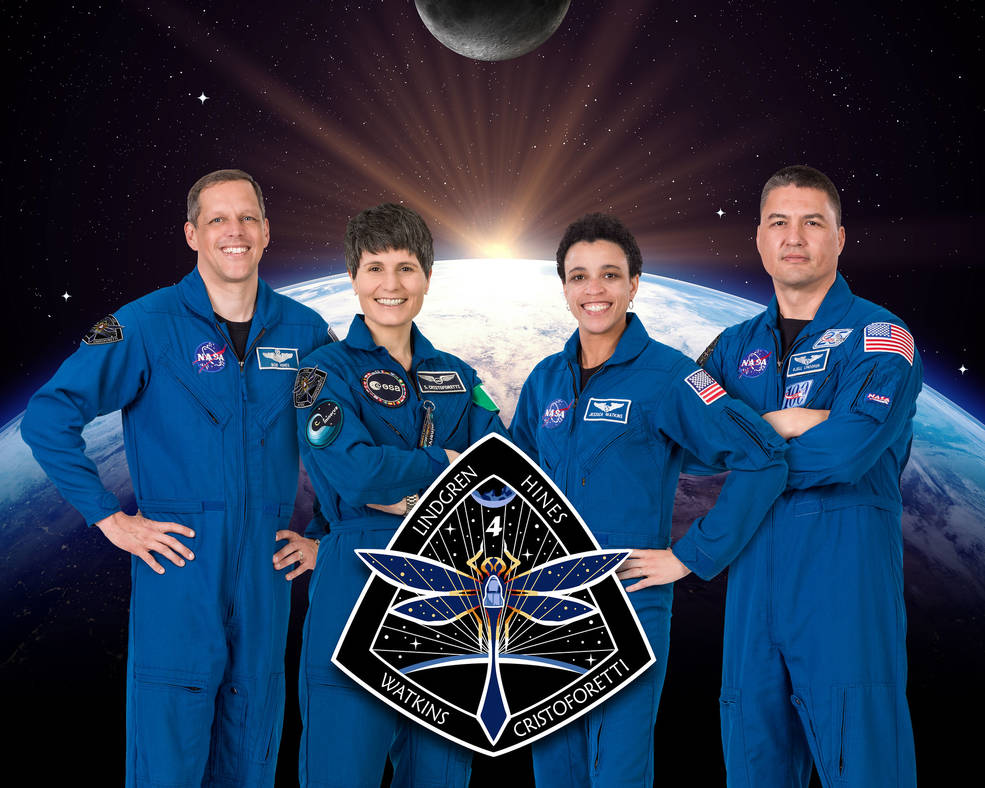
Starship
Starship is the centerpiece of Musk's eventual plans to head to Mars. While the spacecraft remains in early testing, it is NASA's choice of lander to send Artemis astronauts to the moon no earlier than 2025. (NASA's selection had to overcome legal protests by Blue Origin after the agency pivoted to a sole-source contract over multiple vendors, citing a lack of money, but another solicitation was pledged in 2022.)
The testing program began with a smaller vehicle known as Starhopper, which performed a series of tethered and untethered flight tests in 2019 and 2020. Then SpaceX began testing a series of Starship vehicles in high-altitude flights, starting with a cautious hop test of SN5 in August 2020. One of the program's greatest challenges was executing flip maneuvers in mid-air, which led to the demise of several Starships before SN15 achieved a soft landing on May 5, 2021.
Starship is designed to launch to orbit and deep space aboard Super Heavy, the 230-foot (70-meter) tall booster that holds roughly 3.6 tons of liquid oxygen and methane in its propellant tanks. Like all of SpaceX's boosters, Super Heavy is planned to be reusable. It will feature four grid fins to assist in controlling the booster's descent.
The fully stacked Super Heavy and Starship were put together on a launchpad for the first time in August 2021, standing 395 feet (120 meters) tall. That's more than 30 feet (9 m) taller than NASA's massive Saturn V moon rocket.
This Starship-Super Heavy version is set to perform an orbital test in 2022, pending a delayed environmental review of the Federal Aviation Administration of SpaceX's launch facilities in Boca Chica, Texas. The public response to the review added more data points than FAA was anticipating, lengthening the process.
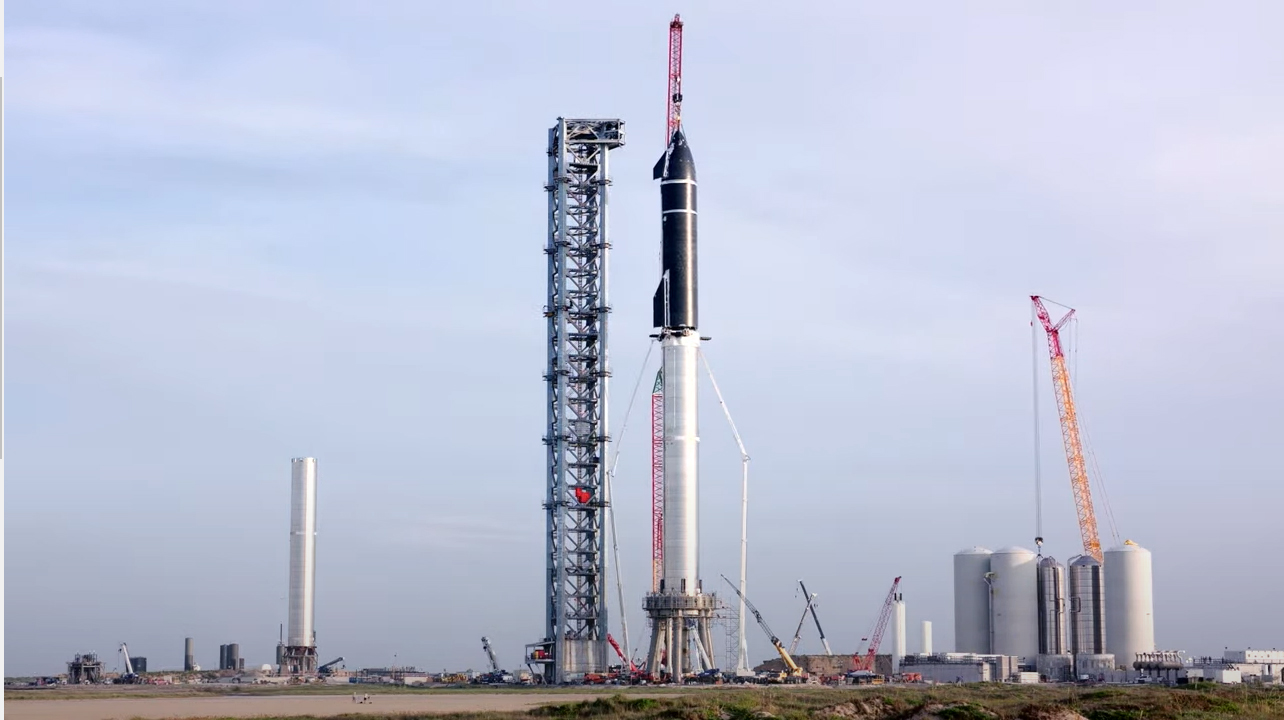
Commercial: Axiom Space, Inspiration4, Polaris Program, dearMoon
SpaceX's success in running Crew Dragon missions to the space station attracted missions from other companies, which use similar spacecraft to run high-Earth orbit missions, ISS missions and in one case, a crewed moon mission.
The first Crew Dragon spacecraft used by non-professionals was the one that flew Inspiration4 into space. Four people rode to orbit on a mission to raise money and awareness for St. Jude Children's Research Hospital in Memphis. The crew used a variant of Crew Dragon with a large cupola window, flown in place of a docking mechanism as they didn't need to reach the ISS.
The success of Inspiration4 inspired Jared Isaacman, the billionaire who had paid for the four seats, to begin his own private space program. Called the Polaris Program, it will run a series of missions for charity and for research purposes in space. Isaacman is expected to participate in all three missions. The first mission, Polaris Dawn, is scheduled to fly in late 2022.
Another company, Axiom Space, plans to run a long series of research-oriented missions to the ISS using SpaceX Crew Dragons. The debut of the series was Ax-1, a 10-day mission in April 2022. Axiom's manifest calls for the company to launch a research module to ISS that will also allow for a film studio.
Moon missions appear to be in play for further in the future. In 2018, Musk announced that Yusaku Maezawa, an artist and billionaire founder of the Japanese e-commerce giant Zozo, and a handful of artists will launch the trip around the moon in the 2020s. SpaceX did not disclose how much Maezawa paid for that trip. The mission is called dearMoon and Maezawa is seeking crewmates for the trip who have an artistic bent.
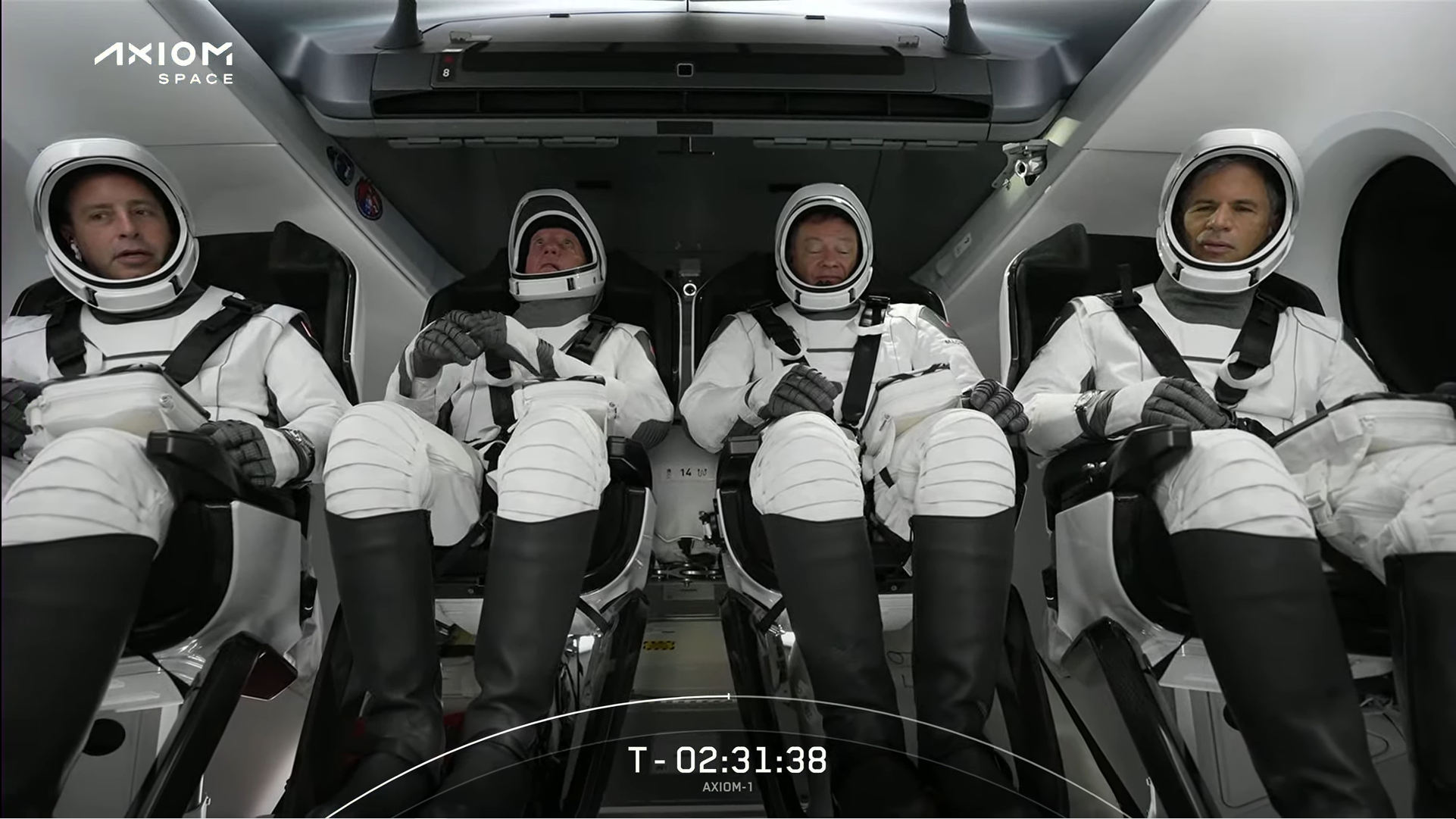
Starlink expansion and controversy
In 2019, Musk and SpaceX ignited controversy in the field of astronomy over the company's plans to place a constellation of 12,000 small satellites in orbit around the Earth in order to provide reliable internet access to remote places. So far, only 60 of these Starlink satellites have launched but they have already left unsightly trails in astronomers' telescope observations of the night sky. Many researchers fear that an increased number of satellites will cause problems for vital data-collecting enterprises.
SpaceX has been testing out a special coating on the next round of Starlink satellites that could help make them less reflective and, therefore, less obtrusive in the night sky. That said, astronomers continue to sound alarms about the potential of intrusions in telescopic images. Wide-field imaging, and imaging at dawn and dusk, appear to be particularly affected by satellite streaks.
While SpaceX has been in conversation with the astronomical community, studies continue to show the impact of Starlink on observations. For example, a 2022 research paper in the Astrophysical Journal showed the wide-field Zwicky Transient Facility's images are becoming more affected with time, as SpaceX deploys more satellites.
NASA also raised concerns about Starlink in 2022, noting a proposal to place 30,000 more Starlink internet satellites into orbit will not only affect ground observations but may also interfere with launch windows due to the number of satellites passing overhead. Increasing space debris collision risk was also noted by the agency, although SpaceX says it has automation to reduce the risk as much as possible.
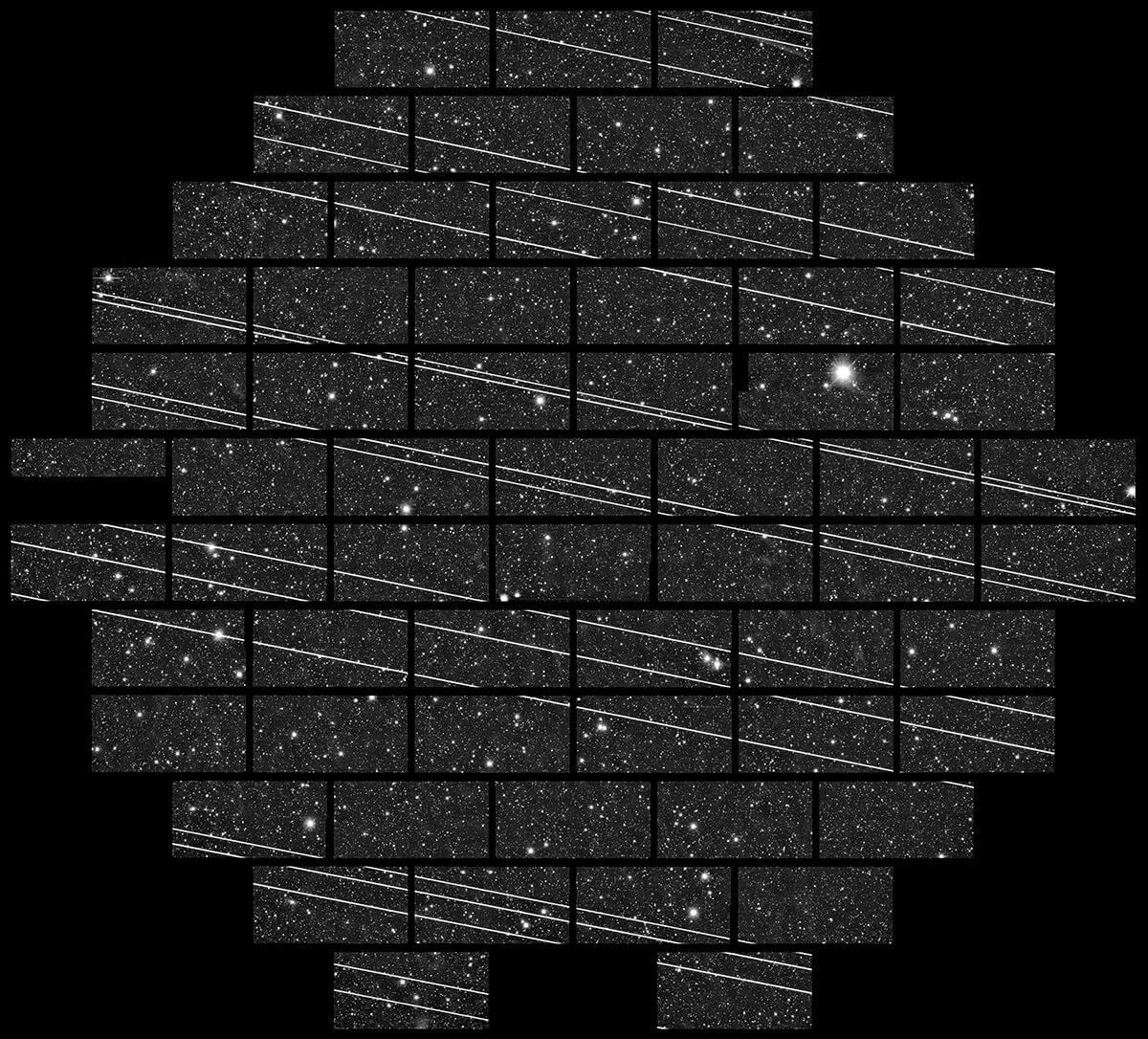
SpaceX's plans for the future, Mars and more
SpaceX has customers from the private sector, military and nongovernmental entities, which pay the company to launch cargo into space. Although SpaceX makes its money from launch services, the company is also focused on developing technology for future space exploration.
And Musk's dreams of flying to Mars are undimmed. In 2011, he told delegates at the American Institute of Aeronautics and Astronautics (AIAA) in San Diego that he planned to take people to Mars in 10 to 15 years. Three years later, at the International Space Development Conference, he said the reusable rocket stage would be a step in getting to the Red Planet.
"The reason SpaceX was created was to accelerate the development of rocket technology, all for the goal of establishing a self-sustaining, permanent base on Mars," Musk said at the time. "And I think we're making some progress in that direction — not as fast as I'd like."
In 2016, Musk unveiled his technological plan for Martian transport, which is a part of his plan to create a self-sustaining Red Planet colony in the next 50 to 100 years. The Interplanetary Transport System, as the rocket is called, is essentially a larger version of the Falcon 9. The spaceship, however, will be quite a bit larger than the Dragon, as it is slated to carry at least 100 people per flight. (The crewed version of the Dragon for the ISS is expected to carry four people, on average.)
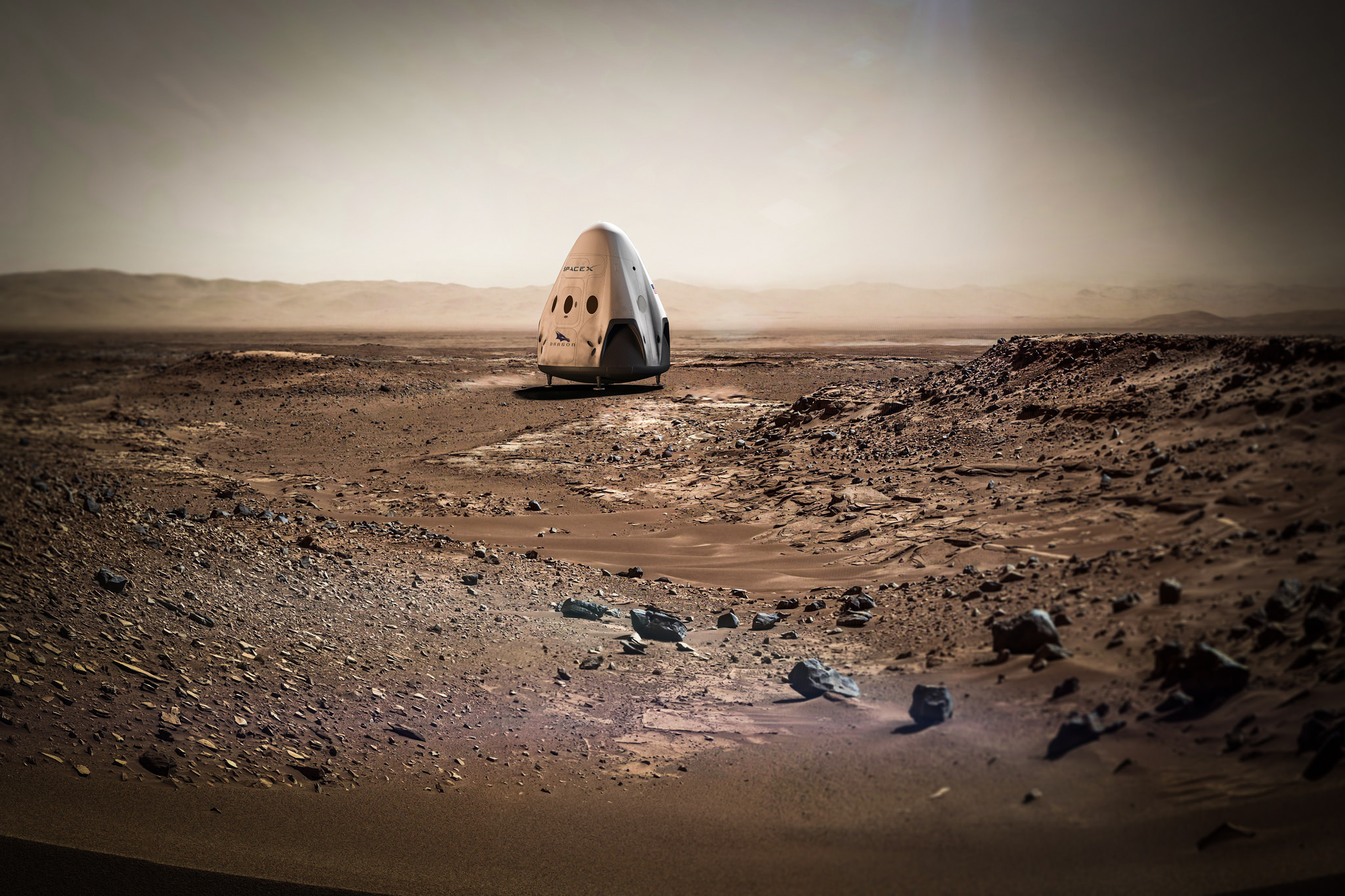
Musk followed up his announcement in 2017 by publishing a paper describing a future Red Planet city of a million people and providing more details about how the ITS would transport cargo and people.
Musk updated his Mars plans in September 2017 in an address in Australia. He didn't mention the ITS during the talk; instead, he talked about a system called the Big Falcon Rocket (BFR). The spaceship that BFR will carry will be 157.5 feet (48 meters) tall and have 40 cabins for passengers, likely with a capacity of 100 people.
Musk once again unveiled an update to his Mars plans, in September 2019, renaming the first BFR to Starship Mk1 and switching its outer coating from expensive carbon fiber to stainless steel. Photos of the shiny, sci-fi-looking craft being assembled at SpaceX's South Texas facilities, near the village of Boca Chica, circulated on the internet.
Related: No more BFR: SpaceX changing name of Mars-colonizing rocket, spaceship
Starship continues to feature in Musk's Mars plans. In a February 2022 update, Musk said it may be possible to reach a launch rate of one Starship vehicle every six to eight hours, and one Super Heavy rocket every hour, on missions that would send up to 150 tons of payload to orbit. Such a high launch rate is expected to bring down costs, Musk said, making Mars settlements more financially feasible.
Additional resources
You can follow SpaceX on Twitter . Watch videos of SpaceX's successful and failed launches on the company's YouTube channel. Check out NASA's SpaceX blog for the latest news on collaborations between the two entities. Read about the series of collaborations to stay up to speed.
Bibliography
Federal Aviation Administration. "SpaceX Starship Super Heavy Project at the Boca Chica Launch Site." 2022, March 25. https://www.faa.gov/space/stakeholder_engagement/spacex_starship/
Government Accountability Office. "Decision Matter of: Blue Origin Federation, LLC; Dynetics, Inc.-A Leidos Company." 2021, July 30. https://www.gao.gov/assets/b-419783.pdf
Mroz, Przemek et. al. "Impact of the SpaceX Starlink Satellites on the Zwicky Transient Facility Survey Observations." The Astrophysical Journal Letters, Volume 924, Number 2. https://iopscience.iop.org/article/10.3847/2041-8213/ac470a. 2022 Jan. 14.
SpaceX. "Starlink." 2022. https://www.starlink.com/
SpaceX. "SpaceX." 2022. https://www.spacex.com/
Join our Space Forums to keep talking space on the latest missions, night sky and more! And if you have a news tip, correction or comment, let us know at: community@space.com.
Get the Space.com Newsletter
Breaking space news, the latest updates on rocket launches, skywatching events and more!

Elizabeth Howell (she/her), Ph.D., was a staff writer in the spaceflight channel between 2022 and 2024 specializing in Canadian space news. She was contributing writer for Space.com for 10 years from 2012 to 2024. Elizabeth's reporting includes multiple exclusives with the White House, leading world coverage about a lost-and-found space tomato on the International Space Station, witnessing five human spaceflight launches on two continents, flying parabolic, working inside a spacesuit, and participating in a simulated Mars mission. Her latest book, "Why Am I Taller?" (ECW Press, 2022) is co-written with astronaut Dave Williams.










